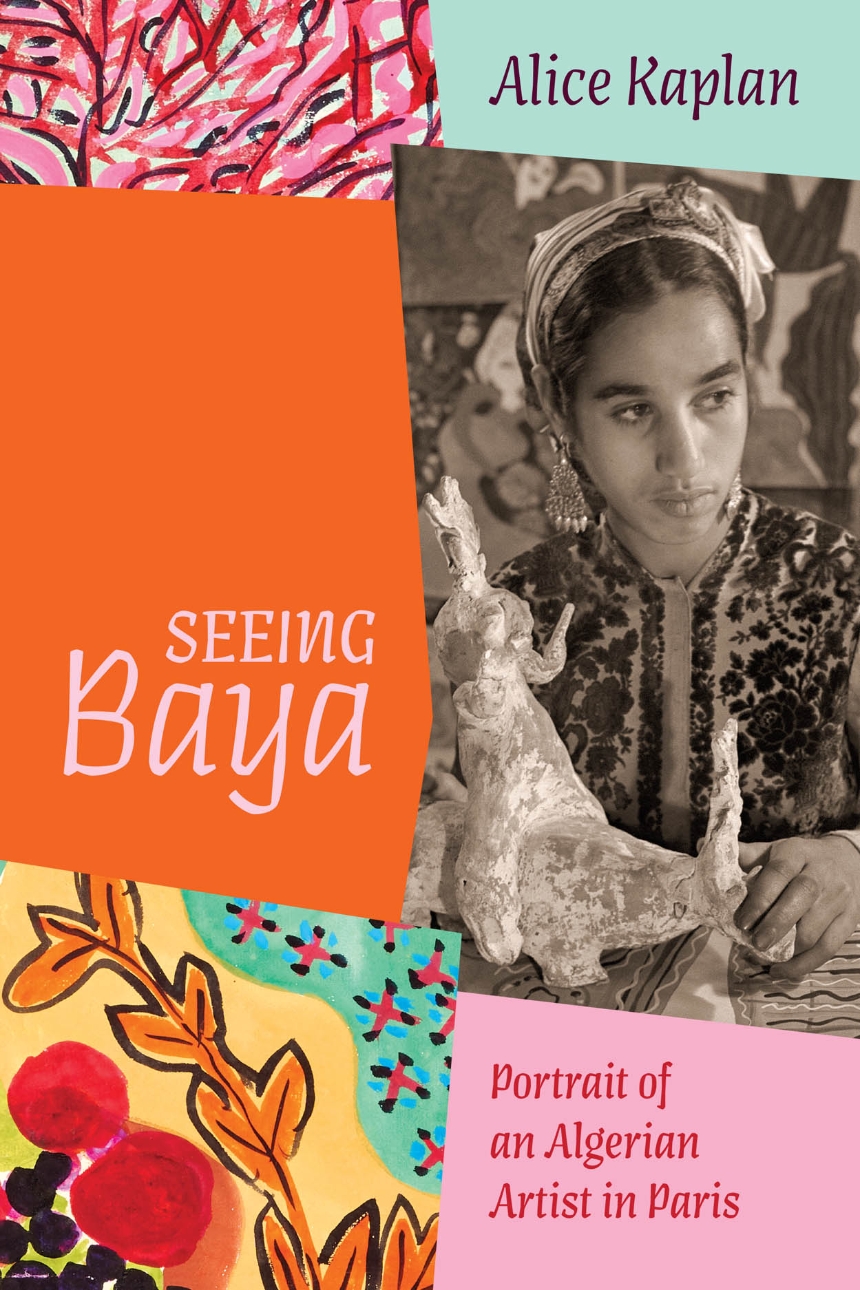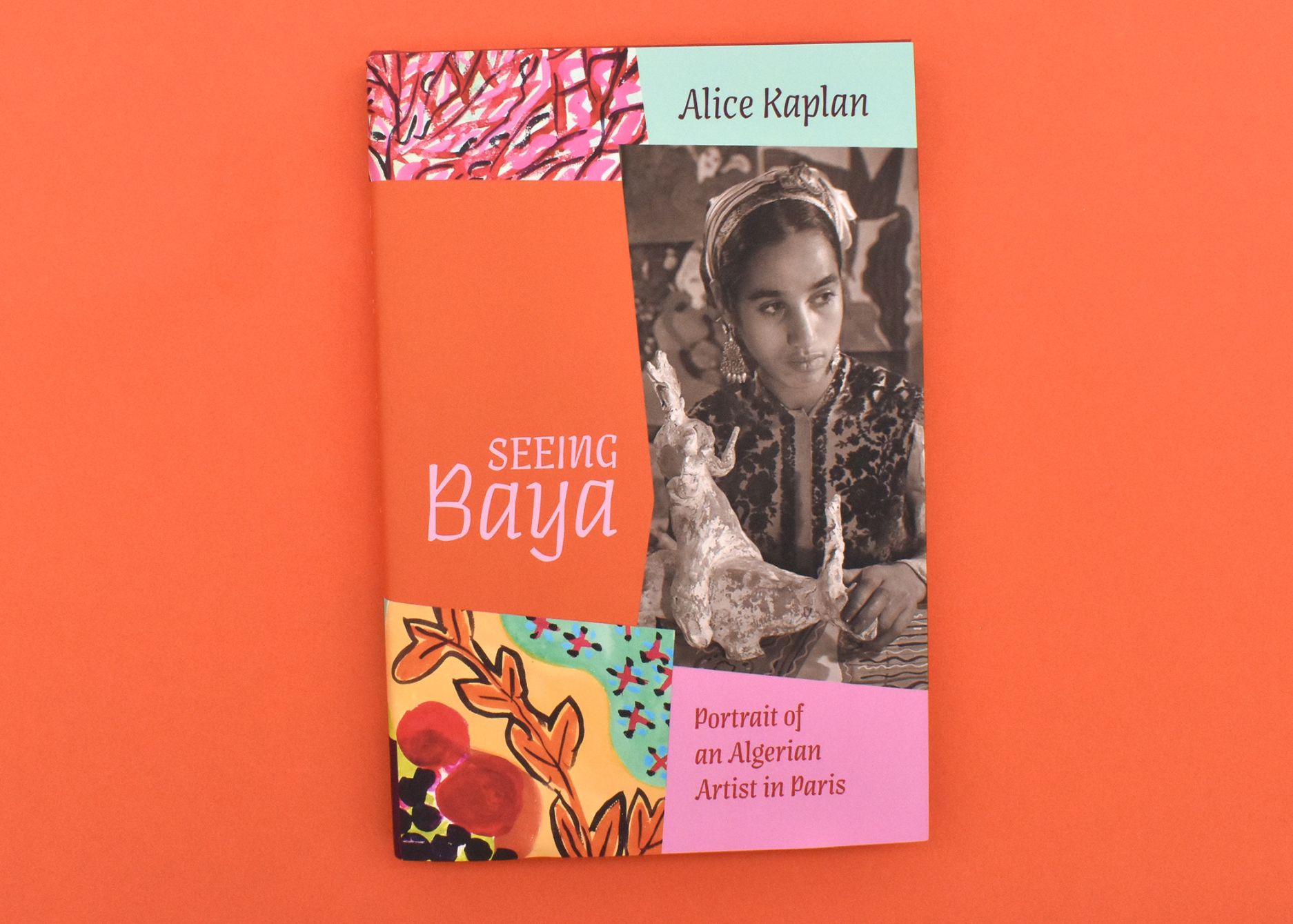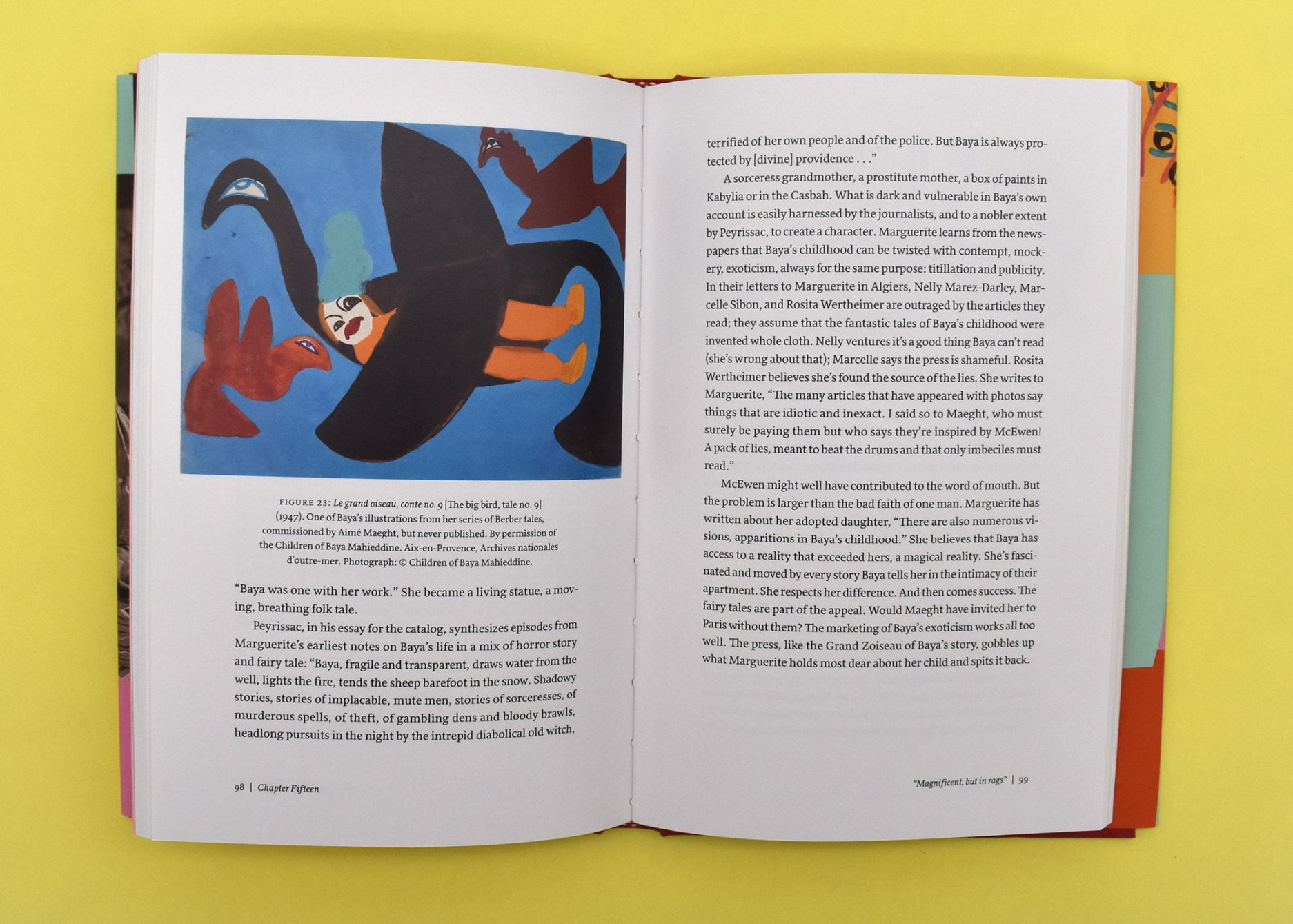Seeing Baya
Portrait of an Algerian Artist in Paris
The first biography of the Algerian artist Baya Mahieddine, celebrated in mid-twentieth-century Paris, her life shrouded in myth.
On a flower farm in colonial Algeria, a servant and field worker known as Baya escaped the drudgery of her labor by coloring the skirts in fashion magazines. Three years later, in November 1947, her paintings and fanciful clay beasts were featured in a solo show in Paris. She wasn’t yet sixteen years old. In this first biography of Baya, Alice Kaplan tells the story of a young woman seemingly trapped in subsistence who becomes a sensation in the French capital, then mysteriously fades from the history of modern art—only to reemerge after independence as an icon of Algerian artistic heritage.
The toast of Paris for the 1947 season, Baya inspired colonialist fantasies about her “primitive” genius as well as genuine appreciation. She was featured in newspapers, on the radio, and in a newsreel; her art was praised by Breton and Camus, Marchand and Braque. At the dawn of Algerian liberation, her appearance in Paris was used to stage the illusion of French-Algerian friendship, while horrific French massacres in Algeria were still fresh in memory.
Kaplan uncovers the central figures in Baya’s life and the role they played in her artistic career. Among the most poignant was Marguerite Caminat-McEwen-Benhoura, who took Baya from her sister’s farm to Algiers, where Baya worked as Marguerite’s maid and was given paint and brushes. A complex and endearing character, Marguerite—and her Pygmalion ambitions—was decisive in shaping Baya’s destiny. Kaplan also looks closely at Baya’s earliest paintings with an eye to their themes, their palette and design, and their enduring influence.
In vivid prose that brings Baya’s story into the present, Kaplan’s book, the fruit of scrupulous research in Algiers, Blida, Paris, and Provence, allows us to see in a whole new light the beloved artist who signed her paintings simply “Baya.”
On a flower farm in colonial Algeria, a servant and field worker known as Baya escaped the drudgery of her labor by coloring the skirts in fashion magazines. Three years later, in November 1947, her paintings and fanciful clay beasts were featured in a solo show in Paris. She wasn’t yet sixteen years old. In this first biography of Baya, Alice Kaplan tells the story of a young woman seemingly trapped in subsistence who becomes a sensation in the French capital, then mysteriously fades from the history of modern art—only to reemerge after independence as an icon of Algerian artistic heritage.
The toast of Paris for the 1947 season, Baya inspired colonialist fantasies about her “primitive” genius as well as genuine appreciation. She was featured in newspapers, on the radio, and in a newsreel; her art was praised by Breton and Camus, Marchand and Braque. At the dawn of Algerian liberation, her appearance in Paris was used to stage the illusion of French-Algerian friendship, while horrific French massacres in Algeria were still fresh in memory.
Kaplan uncovers the central figures in Baya’s life and the role they played in her artistic career. Among the most poignant was Marguerite Caminat-McEwen-Benhoura, who took Baya from her sister’s farm to Algiers, where Baya worked as Marguerite’s maid and was given paint and brushes. A complex and endearing character, Marguerite—and her Pygmalion ambitions—was decisive in shaping Baya’s destiny. Kaplan also looks closely at Baya’s earliest paintings with an eye to their themes, their palette and design, and their enduring influence.
In vivid prose that brings Baya’s story into the present, Kaplan’s book, the fruit of scrupulous research in Algiers, Blida, Paris, and Provence, allows us to see in a whole new light the beloved artist who signed her paintings simply “Baya.”
176 pages | 26 color plates, 16 halftones | 6 x 9 | © 2024
Abakanowicz Arts and Culture Collection
Reviews
Table of Contents
1. Bordj el Kiffan
2. The Maeght Gallery, November 21, 1947
3. Marguerite Caminat
4. Baya Begins to Make Art
5. Behind the Curtains of the European Museum
6. Frank McEwen
7. Love
8. Dream of the Mother
9. Who Is Speaking? (Part I)
10. Baya Goes to Paris
11. Baya’s Hosts
12. Nelly Vigilante
13. The Shadow of Violence
14. Marcelle Sibon
15. “Magnificent, but in rags”
16. Who Is Speaking? (Part II)
17. Photographs and Fabric
18. Les Messieurs
19. Baya Is Launched
20. Homecoming
21. Separation
Acknowledgments
Notes
Index
2. The Maeght Gallery, November 21, 1947
3. Marguerite Caminat
4. Baya Begins to Make Art
5. Behind the Curtains of the European Museum
6. Frank McEwen
7. Love
8. Dream of the Mother
9. Who Is Speaking? (Part I)
10. Baya Goes to Paris
11. Baya’s Hosts
12. Nelly Vigilante
13. The Shadow of Violence
14. Marcelle Sibon
15. “Magnificent, but in rags”
16. Who Is Speaking? (Part II)
17. Photographs and Fabric
18. Les Messieurs
19. Baya Is Launched
20. Homecoming
21. Separation
Acknowledgments
Notes
Index



